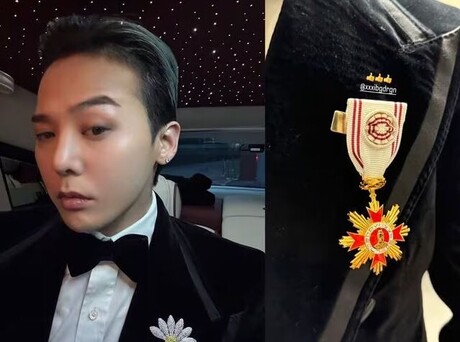A historic gatehouse in the small village of Warnau, Germany, has been transformed into a vibrant family home that perfectly balances traditional architecture with bold contemporary design. Eva Kaiser, a textile designer and former hotel professional, has created a stunning example of how color and modern country style can breathe new life into heritage buildings while respecting their architectural integrity.
Located just 15 minutes from the city of Kiel, the property feels like stepping into a fairytale setting reminiscent of classic German countryside films. Visitors approach the home via a cobblestone path that winds past grazing Icelandic horses and through towering trees, leading to the heart of a courtyard surrounded by historic red brick buildings and a brilliant white-washed main house. The peaceful atmosphere is occasionally broken only by the gentle clucking of chickens, creating an idyllic rural retreat.
Six years ago, Eva Kaiser made a dramatic lifestyle change, relocating from Karlsruhe to northern Germany with her husband and three sons. The family's love affair with the region began during a horseback riding vacation in Eckernförde, where they instantly felt at home. "It felt like coming home, and the idea of starting something new here, buying a farm and breeding Icelandic horses, just wouldn't leave us alone," Kaiser recalls. When they discovered their current property online, the decision was immediate and final.
The centerpiece of this heritage-protected farmstead is an early 19th-century residential building, surrounded by older red brick agricultural buildings that form a charming inner courtyard. Despite the property's protected status, Kaiser has managed to create dramatic interior transformations while preserving the building's historic exterior character. "Back then, it didn't look much different from today," she explains. "The ensemble is under monument protection, so we haven't changed anything about the facades. We set up a small vacation rental in the former bakehouse, and in the main house, we only renovated the kitchen and smoothed and painted the walls on the ground floor."
Color plays the starring role in Kaiser's design philosophy, a passion she attributes to her upbringing as the daughter of a master painter. She describes herself as "very picky" when it comes to selecting the perfect color nuances, consistently turning to the paint manufacturer Kolorat for her palette or having custom colors mixed to her specifications. Her inspiration draws heavily from the Bauhaus movement, particularly the textile works of artist Gunta Stölzl, combined with historical wall paintings discovered in the house's upper floor.
Each room in the 180-square-meter ground floor features its own distinct color concept, established by the wall colors and echoed throughout the space in furniture, curtains, carpets, artwork, and Kaiser's own textile creations from her label Lumikello. The approach creates a cohesive yet dynamic living environment where bold colors feel natural rather than overwhelming. In the bedroom, Kaiser closed off a doorway to the adjacent room and transformed it into an oversized headboard using "Diamond Tulip" wallpaper by Polly Fern.
The home's brightest room celebrates the yellow of a Saarinen chair, with coordinated walls and curtains preventing the color from becoming too jarring. Tables and a Cor sofa are united by a gentle light blue, while an Oyoy rug incorporates both tones harmoniously. This careful color coordination extends throughout the home, creating visual flow between spaces while maintaining each room's individual character.
Kaiser's furniture collection represents a masterful blend of inherited pieces and carefully selected design classics. Under a blue dining room ceiling, an inherited Knoll table awaits the next Sunday breakfast, surrounded by Kaiser's beloved Gio Ponti chairs. A Gerrit Rietveld "Utrecht" armchair from Cassina sits comfortably among Scandinavian design pieces and colorful walls, while the kitchen features an Eiermann table with Eames chairs, an Arne Jacobsen sofa, and a "Pressed Chair" by Nils Holger Moormann, all made cozy with Lumikello cushions.
The home's entry makes a striking first impression with "Pink Toile" wallpaper by Polly Fern creating a beautiful contrast against the forget-me-not blue front door. A Classicon coat stand and Montana mirror complete the welcoming space. In the bay window area, Kaiser dreams of eventually installing an authentic Josef Frank sofa, but for now, a corresponding Bemz cover serves the purpose. Horse figures, including a chandelier by Bjørn Wiinblad, appear throughout the house as recurring decorative motifs.
Friends familiar with the Kaiser family's previous home – a minimalist 1960s architect's house in Karlsruhe – often comment on the dramatic style change. However, Kaiser explains that most of their furniture made the move north; it's simply been re-contextualized and supplemented with new pieces. "I always arrange according to what the house tells me," she says. "And here, I wanted to interpret the country look in a modern way."
The property serves multiple functions beyond family living. Kaiser operates a showroom for her Lumikello textile label in one of the outbuildings, while the former bakehouse has been converted into a vacation rental. The family also regularly hosts festivals and art exhibitions, opening their beautiful home to visitors who can appreciate the stunning visual progression through the large interconnected living spaces.
This transformation demonstrates how thoughtful design can honor architectural heritage while creating a thoroughly modern living environment. Kaiser's approach proves that protected historic buildings need not be museum pieces – they can be vibrant, lived-in family homes that celebrate both tradition and contemporary style. The result is a space that feels both timeless and thoroughly current, where children, dogs, horses, art, and bold color all coexist in perfect harmony.































